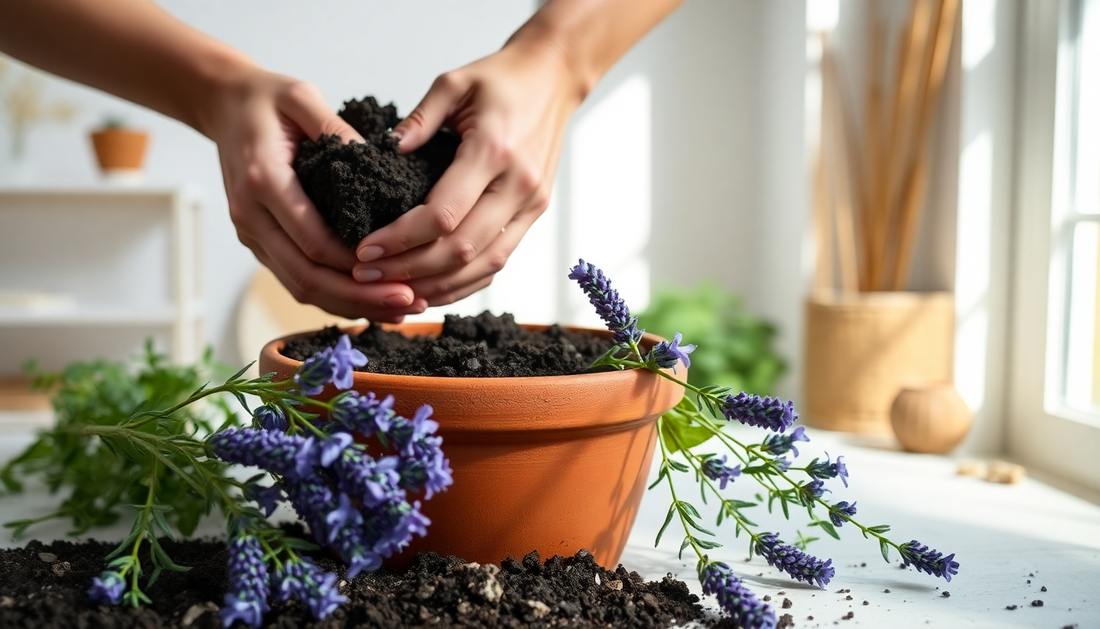
Crafting the Perfect Soil Mix for Thriving Indoor Lavender
As an avid indoor gardener, I've learned that the key to growing lush, fragrant lavender indoors lies in the soil mix. Lavender is a finicky plant that requires a delicate balance of nutrients, drainage, and moisture to truly thrive. In this comprehensive guide, I'll share my tips and tricks for creating the ideal soil mix for your indoor lavender plants, ensuring they flourish and fill your home with their calming aroma.
Understanding Lavender's Soil Needs
Lavender is a Mediterranean herb that naturally grows in well-draining, slightly alkaline soils. When grown indoors, it's essential to mimic these conditions as closely as possible. Lavender prefers a soil mix that is:
- Well-draining: Lavender's roots are susceptible to rot if the soil stays too moist for too long. Ensuring proper drainage is crucial to prevent waterlogging.
- Slightly alkaline: Lavender thrives in a pH range of 6.0 to 8.0, with a preference for slightly alkaline soil around 7.0 to 7.5.
- Nutrient-rich: Lavender requires a moderate amount of nutrients to support its growth and fragrance production, but too much can lead to leggy, weak plants.
- Aerated: Lavender's roots need access to oxygen, so the soil mix should be light and fluffy, not compacted.
By understanding these key soil requirements, you can create the perfect growing medium for your indoor lavender plants.
Crafting the Ideal Soil Mix
To achieve the perfect soil mix for indoor lavender, I recommend using the following ingredients:
1. Potting Soil
Start with a high-quality, well-draining potting soil as the base of your mix. Look for a soil that is formulated for container gardening and contains a blend of peat moss, compost, and perlite or vermiculite to improve drainage and aeration.
2. Coarse Sand or Perlite
Add a generous amount of coarse sand or perlite to your potting soil, aiming for a ratio of 1 part sand/perlite to 2 parts potting soil. This will help ensure excellent drainage and prevent soil compaction.
3. Crushed Eggshells or Limestone
To adjust the soil pH to the slightly alkaline range, incorporate a small amount of crushed eggshells or finely ground limestone. Start with 1/4 cup per gallon of soil mix and adjust as needed based on your specific soil's pH.
4. Compost or Aged Manure
For a nutrient boost, mix in a small amount of compost or aged, well-rotted manure. This will provide a slow-release of essential nutrients without overwhelming the lavender plants.
5. Horticultural Charcoal (Optional)
If you want to further enhance the soil's drainage and aeration, you can add a handful of horticultural charcoal to the mix. This porous material helps improve soil structure and can also help filter out impurities.
Once you've combined all the ingredients, give the soil mix a thorough stir to ensure even distribution of the components. The final result should be a light, fluffy, and well-draining soil that's slightly alkaline in pH.
Planting and Maintaining Lavender in the Perfect Soil
With your custom soil mix ready, it's time to plant your lavender. Choose a well-draining container, such as a terracotta or ceramic pot, and fill it with the soil mix, leaving a few inches of space at the top. Gently place your lavender plant in the center, ensuring the root ball is level with the soil surface. Water the plant thoroughly, allowing any excess water to drain out the bottom.
To maintain your indoor lavender's health, follow these tips:
- Water Wisely: Lavender prefers a drier soil, so allow the top inch or two of soil to dry out between waterings. Stick your finger in the soil to check the moisture level before watering.
- Provide Ample Sunlight: Lavender thrives in full sun, so place your plant in a south-facing window or under a grow light for at least 6 hours of direct sunlight per day.
- Fertilize Sparingly: Use a balanced, slow-release fertilizer every 2-3 months during the growing season, following the manufacturer's instructions. Avoid over-fertilizing, as this can lead to leggy growth and reduced fragrance.
- Prune Regularly: Regularly trim your lavender plant to encourage bushy growth and prevent it from becoming leggy. Snip off any dead or damaged stems, and shape the plant as needed.
- Monitor for Pests and Diseases: Keep an eye out for common indoor plant pests like spider mites or aphids, and address any issues promptly. Lavender is also susceptible to root rot, so be vigilant about overwatering.
By following these guidelines and providing your indoor lavender with the perfect soil mix, you'll be rewarded with a thriving, fragrant plant that will bring a touch of the Mediterranean to your home.
Conclusion
Creating the ideal soil mix is the foundation for growing healthy, fragrant indoor lavender. By incorporating the right blend of potting soil, sand or perlite, alkaline amendments, and organic matter, you can ensure your lavender plants have the perfect growing medium to thrive. With the proper soil, sunlight, and care, you can enjoy the calming presence of lavender in your home all year round.
Happy gardening!







No comments